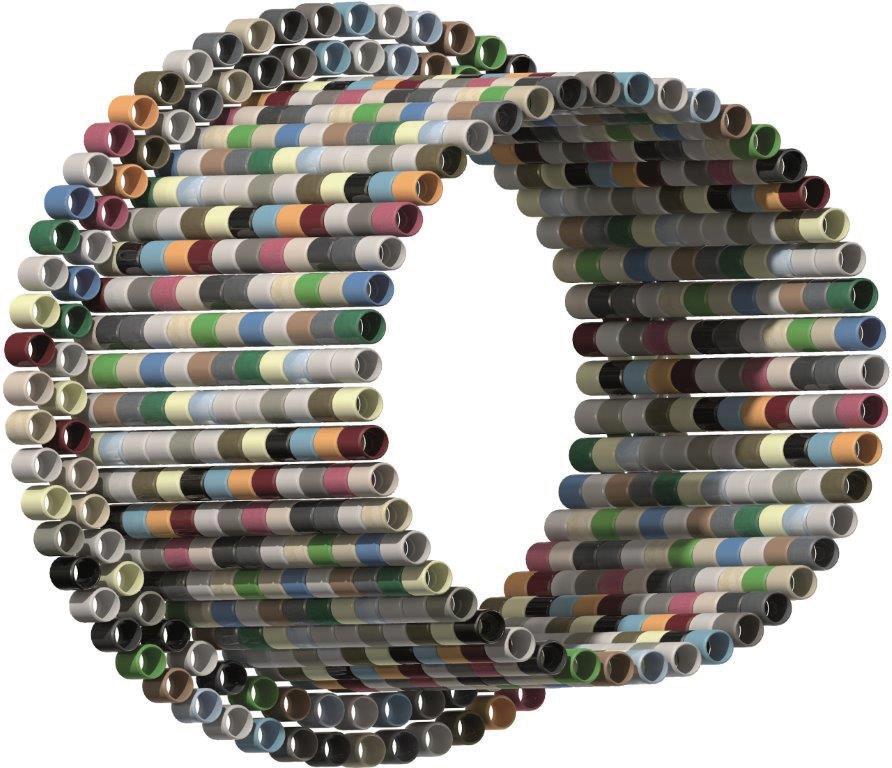
5 minute read
NEW PRODUCTS
Ensuring a safe welding environment
Health and safety hazards are a critical consideration in any workplace for both the employer and employees, and the welding workplace is no exception. However, if safety measures are accurately implemented then much of the risk can be mitigated, if not fully eliminated. Welding can present numerous health risks to the eyes, skin and lungs. Bright light and ultraviolet radiation, toxic fumes and gases, noise as well as heat and fuel to ignite a fire are all hazardous by-products of the welding process. The correct risk assessment, implementation of procedures and the use of approved protective gear can however, make welding a safe procedure.
Advertisement
Burns
Burns are one of the most common injuries in welding and can occur on the skin and to the eyes. The intense ultraviolet and infra-red rays from welding can cause symptoms similar to extreme sunburn if a welder’s limbs are not covered. Hot spatters can also burn unprotected skin. All parts of the body including hands and feet need to be protected from burns. In the case of eye injuries, welding flash or arc eye is probably the most common eye injury among welders who refrain from wearing appropriate eye protection. While approved clothing, footwear and gloves will protect the limbs of a welder, the eyes and face can be safely protected by using the correct helmet. Helmets that feature Auto Darkening Filter lenses and passive lenses (Approved Coloured Glass welding lenses), such as those found in the Kemppi welding helmet range, provide 100% protection against bright light burns and ultraviolet radiation.
Electrical Shock
Welders can also suffer from electrocution if they come into contact with live parts. Welding involves the use of live electric circuits to create a pool of molten metal and therefore, the risk of electrocution is ever present. Treotham New Zealand is pleased to announce that they have been appointed by igus as their exclusive distributor across the New Zealand market for their innovative motion plastics. Treotham New Zealand and igus have been working closely together for over 9 years and have recently been appointed as their exclusive distributor across New Zealand. Treotham will continue to work closely with their trusted agents to provide igus products throughout New Zealand. The range of igus products have been developed for moving applications and high levels of stress. They include energy supply products, cables, bearing technology, linear technology, bar stock, 3D printing filaments and low-cost robotics. The range offers a long service life with no lubrication, are up to 70% lighter than metal products, are resistant to dirt, chemicals and corrosion, and are insensitive to heat However, wearing the appropriate Personal Protective Equipment (PPE) can help minimise the risk of electrocution. Hazardous environments such as damp areas, confined spaces and working on metal floors should also be avoided to reduce the risk. And all welding equipment should be in good working order, and serviced and maintained by a qualified repairer.
Fire
The risk of fire is another safety hazard that welders need to consider. Welding creates heat, sparks and flames. When combined with fuel and oxygen, these sources of ignition can cause a fire or explosion. Fire retardant clothing is a must for any welder and welders need to be mindful of isolating fuel sources from ignition sources. They should also refrain from storing flammable and combustible materials near welding areas, and if they are working with drums and tanks which once held flammable materials, any traces of the combustible substance need to be removed or neutralised prior to welding.
Fumes and Airborne Contaminants
The inhalation of fumes and airborne contaminants as a result of welding can cause irritation of the nose and throat, tightness in the chest, wheezing, asphyxiation, asthma, metal fume fever, damage to the lungs, bronchitis, pneumonia or emphysema. Exposure to welding fumes can also cause cancer. The International Agency for Research on Cancer (IARC) reclassified welding fumes from Group 2B (possibly carcinogenic to humans) to Group 1A (carcinogenic to humans) in March 2017. The International Institute of Welding through its Commission VIII experts is evaluating the IARC’s findings. Welding generates metal particulates and noxious gases including ozone, nitrogen oxides and carbon monoxide. The types of fumes produced and the amount depend on the welding process in use and the type of material being welded. Welding metals, and cold. Every igus product is tested thoroughly in its 3,800m² in-house test laboratory. With solutions for more than 50 different industries, whether in mechanical engineering, the automotive industry or the robot industry, Treotham can offer an igus product for nearly every application. Treotham’s product managers who have accumulated many years of experience are available for personal consultations and visits by sales staff. They are also able to offer tailor made solutions for special applications. Treotham has recently expanded its warehouse by 50% to provide improved support for OEMs and key partners to ensure robust stock and effective supply chain management. Contact Treotham to find out how igus products can
solvents, flux, plastics or paint all produce different gases, and while some of the fumes are visible to the eye, many are invisible but real. As with the other occupational hazards of welding, employers and employees can minimise the risk of inhaling welding fumes and airborne contaminants by using approved PPE. Welders can wear a welding helmet equipped with an appropriate air ventilation system to protect themselves from toxic fumes and airborne contaminants.
Respirator systems used by welders are officially graded by the protection level they offer the wearer, i.e. the level to which they exclude the contaminated air found in the welding environment. This classification rates the efficiency of the filtering system and the total measured combined leakage rating of the respirator system, which is called the Total Inward Leakage (TIL) performance rating. Helmets such as Kemppi’s Gamma GTH3 respirator models protect welders from 99.8% of airborne fumes and particulates to help minimise the risk of lung diseases. Therefore, while the hazards of welding cannot be ignored, they can be effectively managed through approved PPE and the correct procedures to ensure a safe welding environment. https://www.kemppi.com/en-US/support/
Treotham announces exclusive partnership with long-time supplier igus
welding-abc/welding-safety/

improve your application today. www.treotham.co.nz




